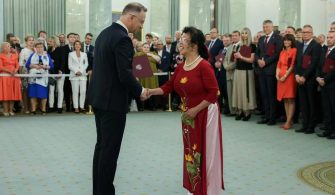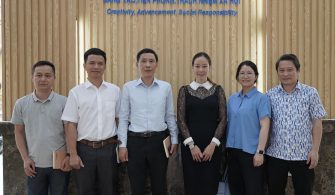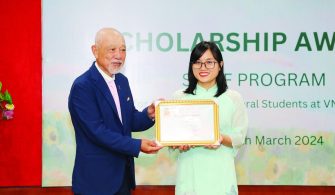Khoa Vật lý trân trọng kính mời quý vị đến dự seminar tháng 03/2019
Ngày: 29/03/2019 (Thứ 6)
Giờ: từ 10 giờ 00 sáng đến 11 giờ 00 sáng
Địa điểm: Phòng 408F, nhà T1, Đại học Khoa học Tự nhiên, 334Nguyễn Trãi
_____________________________________________
Speaker: Dr. DAO XUAN VIET (Advanced Institute for Science and Technology, Hanoi University of Science and Technology)
Title: PHASE TRANSITION PHENOMENA IN 2D GENERALIZED XY MODEL
(Liên quan tới nghiên cứu được giải thưởng (giải nhất) công bố khoa học của viện AIST năm 2018)
Abstract: In 1972, Kosterlitz and Thouless identified a new type of
phase transition in two-dimensional systems where topological defects play a
crucial role [1]. Particularly in the XY model, vortices and antivortices,
which are topological excitations, lead to a phase transition from the
disordered phase of free vortices at high temperatures to a low-temperature
phase of quasi-long-range order of pairs of bound vortices. Several
generalizations of the 2D XY model have been proposed in order to search for
novel phenomena phase transition. Since 1985, starting with the works of
Korshunov, Lee and Grinstein, the generalized XY models which include nematic
interaction, give rise to further, fractional vortex excitations such as
half-vortices. The emergence of both excitations leads to a richer phase
diagram (disordered, nematic, quasi-long-range order phases) than for the
standard XY model [2]. Recently, the generalized XY have seen renewed interest
focusing in the behavior of the tricritical region where the paramagnetic,
nematic, and quasi-long-range phases meet [3]. Our work shows signatures for
the intermediate region starting from the tricritical point, where the
transition line is neither of the same physics as the Ising transition below
nor the Berezinskii-Kosterlitz-Thouless transition far above the tricritical
point [4].
References:
[1] J M Kosterlitz and D J
Thouless. Journal of Physics C: Solid State Physics 6(7), 1181 (1973) (Nobel
prize 2016).
[2] S. E. Korshunov, JETP Lett. 41, 263 (1985); D. H. Lee and G. Grinstein,
Phys. Rev. Lett. 55, 541 (1985).
[3] Y. Shi, A. Lamacraft, and P. Fendley, Phys. Rev. Lett. 107, 240601 (2011).
[4] Duong Xuan Nui et al, Phys. Rev. B 98, 144421 (2018).









